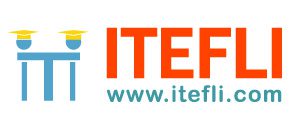Lesson Planning
Lesson planning is simply a step-by-step guide to what an EFL teacher plans to do in the classroom on a given day. The more detailed the steps are, the better.
Ideally, if you could not go to work on a given day, another teacher could read your lesson plan and know exactly how to teach your class on that day. A good lesson plan might even include specific gestures and cues used for various parts of the lesson. That’s how detailed your plan should be.
There are literally hundreds of types of lesson plans but there is not one format accepted by all schools. Many schools have their own set format; others will let you use whatever format you like. There is, however, some general agreement about what should be included in a good lesson plan.
Generally agreed components of lesson planning include:
Day/Date:
Lesson Name: What will you call the lesson? Class/Level: Age, topic, skill level, class name Materials: List everything you need to teach this lesson.
List every possible thing you will need to take to the classroom, and/or obtain from the school to complete the lesson. This list can help you make sure you don’t forget any handouts or special materials that you need to take to the class.
Textbook/Coursebook name: From what book (if any) are you working or drawing the lesson? Unit-title-page number: Specifically where in that book?
Goal/Aim: What are we working toward today?
Describe the final result of the lesson in this format: The students will be able to (do what?).
Example: The students will be able to ask and answer questions about their hobbies and interests Grammar Structures Employed: Show the structures. Use a structure chart if needed.
Questions and Answers relevant to your lesson planning: Ask during the warm-up to elicit from students what they may or may not know about the topic to be covered.
NOTE: The actual lesson-what you will be doing during the class – starts below.
Warm-up: This includes a review (revision) of the previous lesson linked to this new lesson; questions and answers you have written above, used to elicit conversation using the new structures and function; to show examples of what your students will learn in this lesson. In some countries and with some age groups, this may come in the form of a specifically designed game.
Presentation: Note the target language to be taught and how you will teach it. Include how you will stimulate the student’s interest in the language and how you might elicit from the students the language you are planning to teach. Include details as specific as to when you might model structures and dialogue and when you will require a repeated response (choral response) from the students. Include a structure chart for the grammar of the dialogue you intend to teach.
Practice: Include the specific activities and attach any handouts to the lesson plan. Include up to three practice activities, sequencing them from most to least structured slowly giving the students more freedom.
Production: This is where students really learn and generalize a new language skill. Allow/encourage the students to talk about themselves, their lives or specific situations using their own information but focusing on the target language that was taught in the presentation and practised in the previous activities.
Include exactly what you will ask the students to do and what you intend to monitor students and encourage and correct them as needed in their use of the target language.
Conclusion: Discuss/recap what you have studied and learned during the lesson. In some countries and for some ages, this will be followed by a game that uses the target language.
Sample Lesson Plan:
Teacher: Elizabeth
Topic: Talking about future plans
Aim: The aim of this lesson is for the students to be able to relate and talk about their future plans. They will also practice and improve their reading and writing skills. In this lesson, the students will focus on communicating in the future tense and understand the correct grammar and functions related to the future tense. They will also work on improving their sentence structuring.
Materials: A copy of the handout to every student.
Anticipated problems: The students may be unfamiliar with or find it difficult to understand the correct grammar points and functions. They may also be confused with when to know how to use either will or going to in the future tense. They may also be unfamiliar with some of the vocabulary in the handout and their spelling may also be weak.
Solutions: I will first write the following words on the board and give the Thai (for example) translation.
Probably:
Definitely :
Biggest :
Hope:
I will then draw a timeline on the board to explain the grammar points.
PAST——————–PRESENT——————–FUTURE
was am will /going to
Controlled practice:
I will explain how and when we use either will /going to in the future tense. I will explain to the class that it depends on the question form. I will write the following 2 question’s on the board as examples for the class.
Q1: Where are you going tomorrow? A1: I am going to………….
Q2: What will you do tomorrow? A1: I will……………
I will explain to the students that you’ll is short for you will. I will explain to the students that we use going to if it is in the question.
Free practice: I will then have the students give their answers to the questions. I will walk around the class monitoring the students, checking for correct grammar and sentence structure. I will then put the students into pairs and have them ask each other the questions.
Controlled practice: I will then have different pairs stand at the top of the class and role-play the questions to the rest of the class. As always depending on time, I will go through as many students as possible.
Approved by: (school representative)
Date:
Comments:
Sample worksheet for lesson plan above
There would obviously be spaces below each question, allowing students to fill in their answers
Q1. What were you doing five years ago?
Q2. What do you think you will be doing in 15 years’ time?
Q3. Where are you going after this lesson?
Q4.Name one thing you will probably buy today.
Q5. Name one thing you are definitely not going to buy today.
Q6.Name one thing you will probably eat today.
Q7.Name one thing you are definitely not going to eat today.
Q8.What is your biggest hope for the future?
Note: You will find literally thousands of EFL/ESL lesson planning examples on the Internet. Take a look at a few and you will rarely see the same format used. But they will generally have, in one form or another, most of the information indicated above.
Links:
TEFL Courses & TEFL Training Programmes
TEFL Jobs & English Teaching Positions

